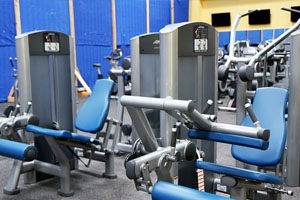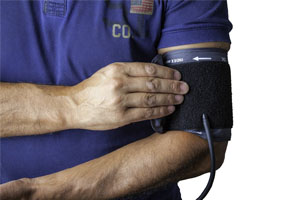Discover the four primary stretching techniques that can enhance your flexibility and overall fitness Learn how to incorporate these stretching methods into your fitness routine for better range of motion and injury prevention
What are the 4 main stretching techniques? Stretching is an essential component of fitness and flexibility. It helps improve your range of motion, prevent injuries, and enhance muscle performance. Understanding the primary stretching methods can aid you in creating a well-rounded fitness routine. In this article, we will explore the four main stretching techniques and their benefits. Whether you're an athlete, fitness enthusiast, or simply looking to enhance your flexibility, learning about these techniques will be valuable in achieving your fitness goals.

1. Static Stretching
Static stretching is a widely practiced and accessible form of stretching that focuses on lengthening and relaxing specific muscle groups. In this technique, you assume a position that elongates the target muscle and hold it for an extended period, usually 15-30 seconds. Static stretching is a great way to improve flexibility and range of motion. Here are some key points to consider:
- **Technique:** To perform a static stretch, choose a muscle group, and gently stretch it to a point where you feel mild tension. Hold this position without any sudden movements.
- **Breathing:** Breathe deeply and evenly during the stretch. Inhale as you prepare for the stretch and exhale as you relax into it.
- **Duration:** The optimal duration for static stretches is typically around 15-30 seconds for each muscle group. This allows time for the muscle to adapt and elongate gradually.
- **Benefits:** Static stretching can help improve flexibility, reduce muscle tension, and enhance relaxation. It's often used in warm-up and cool-down routines for various physical activities.
Static stretching is especially beneficial after a workout when your muscles are warm, making it easier to lengthen and relax them. Incorporating static stretching into your routine can contribute to improved muscle health and overall flexibility.
2. Dynamic Stretching
Dynamic stretching is a dynamic and active way to prepare your muscles and joints for physical activity. Unlike static stretching, which involves holding positions, dynamic stretching involves controlled movements that mimic the actions you'll perform during your workout. This form of stretching helps increase blood flow, warm up your body, and enhance your range of motion. Here's what you need to know about dynamic stretching:
- **Technique:** To perform dynamic stretching, engage in controlled movements that gradually increase in range and speed. These movements should mimic the motions you'll use in your workout.
- **Warm-Up:** Dynamic stretching is an excellent warm-up routine as it activates your muscles, raises your heart rate, and increases blood flow to the muscles you'll be using.
- **Range of Motion:** Dynamic stretching enhances your range of motion by actively stretching and contracting the muscles. It's particularly useful for activities that involve quick, explosive movements.
- **Examples:** Common dynamic stretches include leg swings, arm circles, walking lunges, and high knees. These movements promote flexibility and help prevent injury.
Dynamic stretching is best suited for activities that require agility, speed, and power. It's a valuable addition to your warm-up routine, preparing your body for the demands of your workout or sport. Incorporating dynamic stretching can help you perform at your best and reduce the risk of muscle strain or injury.
3. PNF Stretching (Proprioceptive Neuromuscular Facilitation)
PNF stretching, short for Proprioceptive Neuromuscular Facilitation, is an advanced stretching technique that involves a combination of stretching and contraction of targeted muscle groups. It's a highly effective method to improve flexibility and range of motion. PNF stretching is often done with a partner, but it's possible to perform certain PNF techniques independently. Here's a closer look at PNF stretching:
- **Technique:** PNF stretching involves cycles of stretching and contracting. You start by stretching the target muscle, then contracting it against resistance (often provided by a partner). After the contraction, you relax and stretch the muscle further. This cycle is typically repeated 2-4 times.
- **Partner Assistance:** Many PNF techniques require a partner's assistance to provide resistance during muscle contraction. The partner helps in facilitating a deeper stretch and more significant gains in flexibility.
- **Contract-Relax:** The most common PNF technique is the "contract-relax" method. In this method, the muscle is stretched to its limit, held for a few seconds, contracted against resistance, and then relaxed. This sequence is repeated to enhance flexibility.
- **Benefits:** PNF stretching can lead to substantial improvements in flexibility, making it valuable for athletes, physical therapy, and anyone looking to enhance their range of motion. It can help reduce muscle tightness and enhance muscular coordination.
PNF stretching can provide remarkable results in terms of flexibility and muscle function. While it's often utilized in rehabilitation and sports training, it should be performed with care, and it's advisable to seek guidance from a professional, especially when done with a partner. When executed correctly, PNF stretching can lead to significant gains in muscle length and joint mobility.
4. Ballistic Stretching
Ballistic stretching is a stretching technique that involves rapid, bouncing movements to extend the range of motion of a muscle or muscle group. Unlike other stretching methods, ballistic stretching can be more intense and should be approached with caution. It's typically not recommended for beginners or those with certain medical conditions. Here's an overview of ballistic stretching:
- **Technique:** Ballistic stretching involves repetitive bouncing or jerking motions that push the muscle beyond its natural range of motion. These movements use momentum to stretch the muscle.
- **Use of Inertia:** Ballistic stretching relies on the body's inertia to create the bouncing movements. The goal is to increase flexibility by using the momentum generated through these quick, rhythmic actions.
- **Intensity:** Ballistic stretching can be intense and is often used by athletes who require explosive movements. It's not recommended for individuals with muscle injuries, as the bouncing can increase the risk of strains or sprains.
- **Caution:** Due to its intensity and potential risk of injury, ballistic stretching should be performed carefully and preferably under the guidance of a trained professional. It's essential to listen to your body and not force the stretching too aggressively.
Ballistic stretching can be effective in increasing dynamic flexibility, which is essential for athletes involved in activities that require explosive power. However, it should be approached with caution and may not be suitable for everyone. It's crucial to understand your body's limitations and use this technique sparingly and under the right circumstances.
Frequently Asked Questions about Ballistic Stretching
Q1: What is ballistic stretching, and how does it differ from other stretching methods?
A1: Ballistic stretching is a stretching technique that involves rapid, bouncing movements to increase muscle flexibility. Unlike static stretching or PNF stretching, which involve slow, controlled movements, ballistic stretching uses the momentum generated by quick, bouncing actions to push muscles beyond their usual range of motion.
Q2: Is ballistic stretching suitable for everyone?
A2: Ballistic stretching is not recommended for everyone. It can be intense and carries a higher risk of injury, particularly for individuals with muscle injuries or those new to stretching. It's commonly used by athletes and should be performed with caution, preferably under professional guidance.
Q3: How can I perform ballistic stretching safely?
A3: To practice ballistic stretching safely, start with a thorough warm-up to prepare your muscles. Perform controlled bouncing movements, paying attention to your body's response. Avoid forcing stretches and listen to your body's limits. It's essential to use this technique sparingly and not overexert yourself.
Q4: What are the potential benefits of ballistic stretching?
A4: Ballistic stretching can increase dynamic flexibility and help athletes improve their explosive power for sports that require it. It's a method that targets specific types of athletes but should be used carefully to avoid injury.
Q5: Are there any specific situations where ballistic stretching is more appropriate?
A5: Ballistic stretching is more appropriate for athletes involved in activities that demand quick, explosive movements. It's commonly used in sports like track and field, martial arts, and gymnastics, where dynamic flexibility and power are essential for performance. However, even in these cases, it should be performed with caution and moderation.










